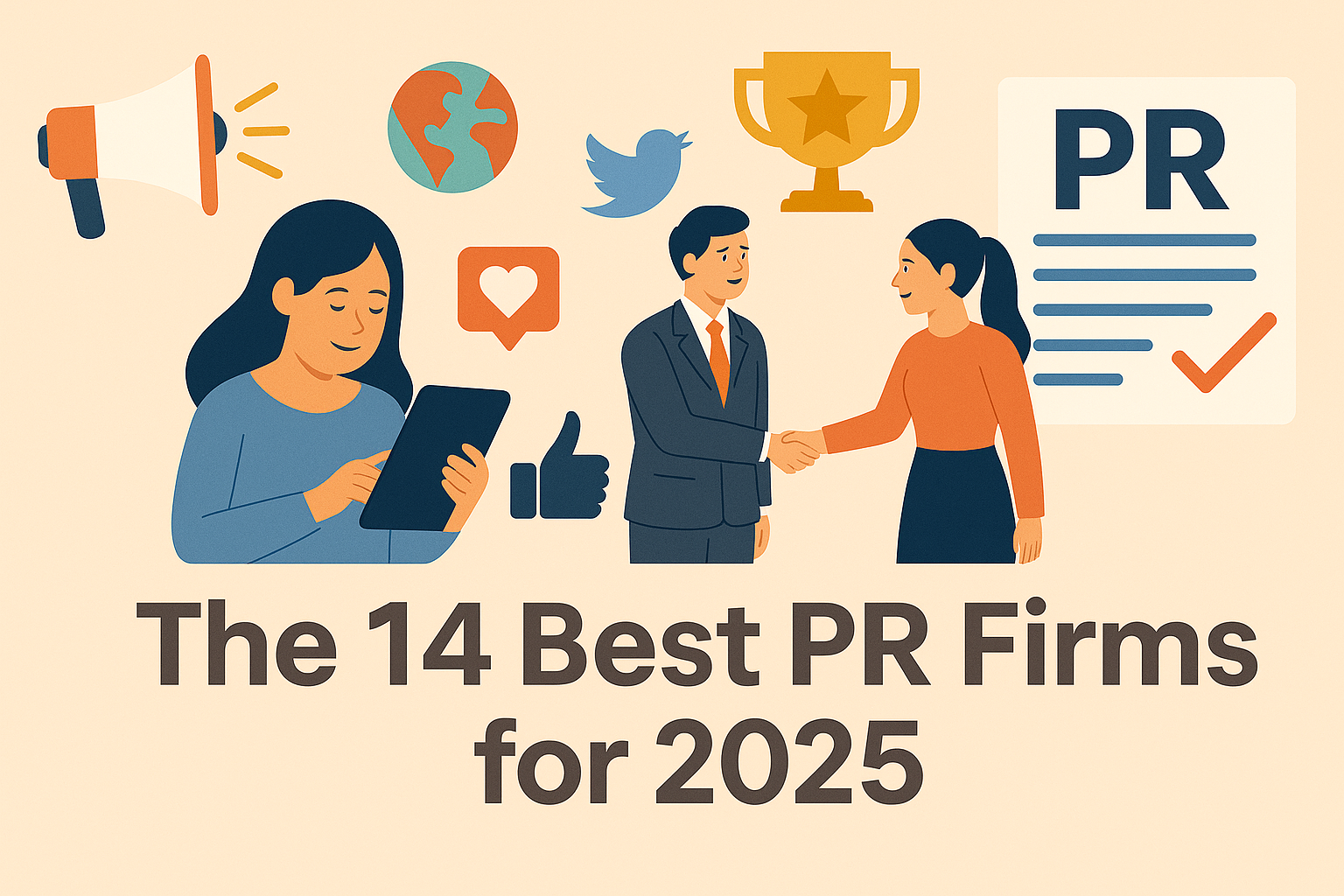“We need to prepare a press release on this!”
I’ve heard it a million times, and the number of times it’s the right strategy is far fewer.
The term “press release” is an antiquated phrase for an antiquated tactic.
Yes, there are times when they still make sense—M&A, earnings reports, C-suite hires, and new product launches. Releases can reach the media fast and broadly, and because the content conveys big news, the media will recognize it. If it resonates with them, they will react to that—but a release is not a tool for every company update.
In an age where information reigns supreme and flows with unprecedented speed and reach, the power of leveraging the correct media coverage has never been more significant. In 2023, the world is more connected than ever before, and media coverage plays a pivotal role in shaping our perceptions, decisions, and actions.
Media coverage isn’t just about sharing stories; it’s about influencing opinions, creating trends, and making a lasting impact. The significance of media coverage lies in its ability to connect, inform, persuade, and mobilize. Whether you’re a business owner, a public figure, or an advocate for change, the proper media coverage can elevate your message and brand like never before.
Understanding Newsworthiness
Newsworthy content is the lifeblood of media coverage. Too often, we see people mistake content as newsworthy when it’s really more snooze-worthy (more on that later!). To understand how to differentiate between them better, here are some key factors that determine whether a story is worthy of coverage:
Factors That Determine Newsworthiness
Timeliness
Timeliness is the essence of news. A story must be current and relevant to capture the media’s attention. Events happening right now or issues with immediate impact often take center stage.
Significance
Significance assesses the importance of a story. Is it relevant to a wide audience? Does it address a critical issue or answer pressing questions? The more significant the story, the more newsworthy it becomes.
Prominence
The involvement of notable individuals, organizations, or celebrities can significantly enhance a story’s newsworthiness. People are naturally drawn to stories that involve well-known figures.
Proximity
Proximity refers to geographical relevance. Local news outlets are interested in stories that directly affect their communities. Thus, stories that hit close to home tend to get more coverage.
Human Interest
Human interest stories evoke emotions. They can be heartwarming, inspiring, or even heart-wrenching. Such stories resonate with audiences on a personal level and are more likely to be covered.
The issue we run into as PR professionals is that many companies still think a “press release” is a great tool for any company update or improvement. Asking, “Is this NEWSworthy?” will go a long way to solving for X. For day-to-day business updates, leverage other more targeted, precise, and customized tactics for the key audiences.
When to Pitch the Media
Knowing when to pitch your story is just as crucial as crafting a compelling narrative. Ideal situations for approaching the media are:
Breaking News
Capitalize on breaking news events that relate to your story. Timing is critical, as your content can add depth and context to the ongoing discussion and potentially establish you as a thought leader in that industry, topic, or conversation.
Milestones and Achievements
Celebrate your achievements and milestones. Whether it’s a company anniversary, a product launch, or a major accomplishment, these moments provide excellent opportunities for positive coverage.
Timely Trends
Keep an eye on trends and topics relevant to your industry or cause. Aligning your story with ongoing trends can make it more appealing to journalists as it is a hot-button issue and more likely to resonate and grab readers’ attention.
There is nothing more painful than having to send a follow-up email to a reporter about a release that doesn’t meet the mark for coverage. Conversely, there is likely nothing more annoying than receiving that follow-up email as a reporter when you’ve already dismissed the first one. Using the nomenclature “news release” clarifies the tactic and helps identify when it truly makes sense: to release news.
When to Avoid Pitching the Media
While media coverage can be powerful, not all situations are ripe for pitching. Exercise caution when your content is:
Overused
If a topic has been extensively covered and offers no new angle or insights, it may be best to wait for a fresh perspective or a unique development. Offering a take that has already been covered in the discussion only makes you look unoriginal, unintentional, and creates more noise.
Lacks Relevance
Ensure that your story aligns with the interests of the media outlet and its audience. Irrelevant stories are unlikely to gain traction and outlets are extremely less likely to pick up your piece if it doesn’t relate to their typical content, tone, or audience.
Over-Promotional
No one wants a sales pitch, so avoid overtly promotional content. Journalists are more interested in providing valuable information than serving as advertising platforms.
Seasonal or Time Limiting
Be mindful of the seasonality of your story. Some stories may be more suitable for certain times of the year. If you’re trying to convince someone to spend a day by the pool in 30-degree weather, it’s safe to say they probably won’t go for it. The same goes for news.
Leveraging Alternative Media Channels
Media and other key stakeholders aren’t waiting by the fax machine or for an email to come across with a news release anymore. (Maybe they did at the beginning of my career, but that’s another story for another time). So how do we release company or product updates? Twitter, LinkedIn, customer emails, and thought leadership articles. All of these tactics and amplification of the results will go further than sending out a release and hoping for the best.
Social Media
Social media has never been more important, and making sure you have a voice on at least one platform (preferably more) is essential. It’s not just a means of personal connections but a powerful tool for broadcasting your message and establishing yourself and your brand in the industry.
Social media allows you to engage directly with your audience and amplify your message through shares, likes, and comments. They also offer advanced targeting options, ensuring your content reaches the right audience. You can provide real-time updates on events, issues, or developments, keeping your audience informed and engaged.
Blogging and Content Marketing
Blogging and B2B content marketing are important tools for creating and sharing valuable, relevant content. These approaches are indispensable tools for building authority and trust with your audience.
Blogs can educate your audience on complex topics, positioning you as an expert in your field and allowing for more extensive storytelling, helping you connect with your audience on a deeper level. Quality content improves your website’s search engine ranking, increasing its visibility.
Direct Outreach to Target Audiences
Don’t underestimate the power of direct outreach. Building relationships with your audience through newsletters, B2B email marketing campaigns, and personalized messages can yield great results by meeting your audience where they’re at.
Tailor your messages to specific segments of your audience, addressing their unique interests and needs. Direct outreach fosters engagement and encourages meaningful interactions with your audience.
Crafting your Newsworthy Story
Identify Your Unique Angle
In a media landscape saturated with information, finding your unique angle is essential. Ask yourself: What sets my story apart? What fresh perspective can I offer? Framing your content by what makes it different is the first step in ensuring it stands out from the influx of information online and reaches the right audience.
Align with Current Trends
Tapping into current trends or hot-button issues can catapult your story into the spotlight. Stay informed about industry trends, social movements, and cultural shifts, and be sure to hit these topics while the conversation is still lively, so you don’t fall short of the buzz.
Leverage Data and Statistics
Everybody loves the cold, hard facts. Concrete data adds weight to your story, so use statistics, research findings, and surveys to support your claims and provide credibility.
Tell Your Story
Storytelling is the art of connecting with your audience on a personal level. Here’s how to master it:
Craft a Compelling Narrative
Craft a story with a clear beginning, middle, and end. Engage your audience emotionally by building tension and resolution.
Emotional Appeal
Emotions drive action, so pull on their heartstrings! Find the heart of your content and use it to appeal to your audience’s emotions, whether it’s excitement, empathy, or inspiration.
Relatable Characters
Introduce relatable characters or personas into your story. Humanizing your content helps your audience connect and see themselves in your content (and, further, your organization).
Building Media Relationships
When I think of the “press,” I picture old-time newspapermen huddling outside a courthouse or fending off Model Ts in the streets of New York City. The dissemination of news and the way to reach reporters has changed remarkably since then. We use state-of-the-art tools to ensure we know which reporters to connect with and their preferred communication methods.
The media game has changed. Newsrooms are no longer the bustling hotspots they once were. Now most reporters are either overloaded or serving as independent freelance writers. We need to act accordingly and work creatively to get news into the hands of the right people. Building relationships with journalists and editors can open doors to media coverage opportunities. Here’s how:
Cultivating Media Contacts
The power of networking cannot be understated. Attend industry events, conferences, and meetups to connect with media professionals. Then, after initial contact, nurture these relationships through periodic follow-ups and genuine conversations. Offer journalists valuable insights, data, or expert commentary. Be a resource they can rely on.
Crafting an Effective Pitch
Your pitch is your foot in the door. Make it irresistible by being concise, highlighting your angle, or offering exclusive content. Journalists are busy; get to the point quickly, clearly convey why your story is newsworthy, and consider offering them exclusive access or a unique angle to seal the deal.
Building Trust with Journalists
Trust is the foundation of media relationships. Uphold your integrity through honesty, meeting deadlines, and respecting their expertise. By providing accurate and on-time deliverables and respecting their knowledge in their field, you begin to build the foundation for a long-lasting and mutually beneficial business relationship.
Handling Media Interviews
Media interviews can be nerve-wracking, but preparation is key. Before every interview, be clear on what your message is and stick to it. Be prepared to answer tough questions, practice your responses, and stay calm. You’ve got this!
Press Releases and Media Kits
The best press releases share the same three components. These make for the most succinct and digestible reader experience, and therefore drive higher engagement.
Crafting an Attention-Grabbing Press Release
Press releases are a staple in media communication (obviously). To stand out, craft yours with clear and concise headlines that grab the audience’s attention, summarize the story, and include quotes that add depth and authenticity to your release. Try using the inverted pyramid structure when organizing the content, putting the most important information at the beginning and providing additional details later.
Assembling a Comprehensive Media Kit
A media kit is your storytelling arsenal. It should include press releases with the latest news or announcements for your company, high-quality images and graphics to make your story more engaging, and key company information like facts, biographies, and contact information (so it’s easier for journalists to contact you!).
Distributing Press Releases Effectively
To ensure your press release reaches the right audience, use targeted distribution services that allow you to target specific industries, regions, or demographics. Then, after distributing your press release, follow up with key journalists and outlets to gauge interest.
Measuring Media Coverage Impact
Great, now that your press release is out in the world. But how do you judge how it is performing?
Key Metrics for Media Coverage
To gauge the impact of your media coverage, track media impressions, website traffic, conversion rates, and other engagement metrics including likes, shares, comments, and retweets. By tracking how media coverage influences sales, you can tailor your future approaches to be that much more effective.
Analysing Media Coverage ROI
Evaluate your ROI by comparing the costs of your media efforts to the benefits they generate. This may include increased brand awareness, leads, or revenue.
Adjusting Your Strategy
Use data-driven insights to refine your media coverage strategy continually. Adapt to changing trends and audience preferences.
Mastering the Art of Media Coverage
To craft the perfect press release, you need to understand what makes your story newsworthy and use this to craft a compelling narrative that resonates with your audience so you can pitch it strategically to maximize its impact. Utilize a mix of traditional and digital media channels to get your story out there, cultivate strong relationships with media professionals, and track the impact of your media coverage to adjust your strategy accordingly. Stay informed, adapt to changes, and keep refining your approach to ensure your messages reach and resonate with your audience.
If you ever need any help verifying that your news is worthy of a press release, try our new Snooze or News tool! This is a first-of-its-kind AI-powered press release tool where you can enhance your press releases, receive expert feedback, and gauge your announcement’s newsworthiness.
And, as always, if you have any more questions, we would love to chat.





